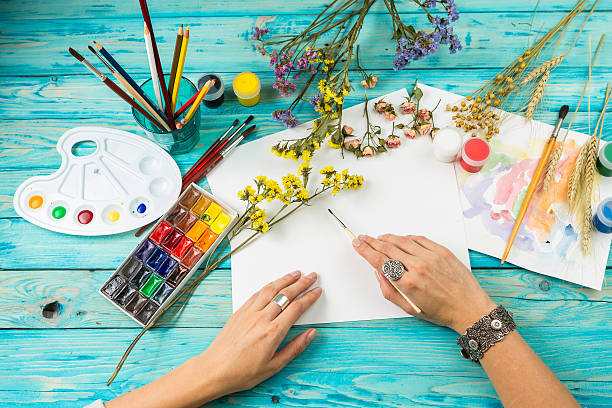My company recently announced that it is hosting a wine and paint day for workers this spring. It’s a chance to eat some cheese, make anything you can hang up and enjoy your colleagues’ artwork. I’m excited about this because one of my colleagues and I regularly discuss paintings we are working on, and artwork shows she is planning to attend.
It’s also great for us because our walls are boringly off-white, blank and an overall bummer to look at. We are in need of something for those partitions. It was a picture of Rod Blagojevich’s face on a rat’s body with a few dark, underworld-esque background.
This got me thinking about the effect creating art can have on your brain, anxiety levels and general health, and there is a lot to be optimistic about.
According to an article on the benefits of art therapy –“a type of expressive psychotherapy which uses the creative process of creating art to enhance an individual’s physical, psychological, and psychological well-being” — the advantages of producing art include a general sense of relief, overall better mental health, diminished stress and the opportunity to process complex emotions. It is a tool that people can use for their own advantage or a legitimate sort of treatment that professionals use to deal with people who have an assortment of psychological or psychological disorders like cancer, PTSD, psychological abuse and bipolar disorder.
The art studio out of my figure drawing course during college.
I took a figure drawing class in school while I studied abroad in Rome, and it would often be my favorite part of the week. After sitting on some early church’s steps nearby for 30 minutes and people-watching, I would get three hours at a quiet, dusty studio. It was an excellent opportunity to focus on one job for three hours straight and clear my mind of to-do lists and duties.
A different article from Business Insider also recorded several advantages of earning art for the ordinary person. Noteworthy here is that “making art” does not need to mean drawing or painting; it may be sculpting, dancing, making music or some other creative pursuit. Also, there are lots of scientific studies which were conducted to support the potential advantages of creating art.
There is still further research to be done, but lots of these research results show promise. A Journal of Applied Cognitive Psychology research found that when folks doodle while listening to dull info, they are more likely to keep in mind that information and remain focused.
I believe that the office could learn a thing or two from those lessons. Sleeping enough, with a nutritious diet and exercising can help with stress relief, naturally, but something about the creative side can help, too.
The focus of health initiatives is so often something physical. Take this many measures; shed that lots of pounds; take a yoga class this several times a week; monitor your blood pressure another body measurement on this program. There’s a trend moving toward psychological or psychological well-being in health programs, but there is still more to be seen what happens in this area.
A collage of the Chicago Skyline made from portions of Chicago Tribune’s Sunday crosswords my loved ones, and I have finished.
I once asked a health professional I met at a seminar if workers could use funds given to them via an employer-sponsored wellness program on activities like art courses. Her response was that though that notion was fine in theory, it is tough to gauge the effects of the something like this.
So often it feels like corporate health programs are a lot more focused on what could be counted. Needless to say, there is a reason for this. This way results can be quantified, which permits a company to measure the effect of the program.

